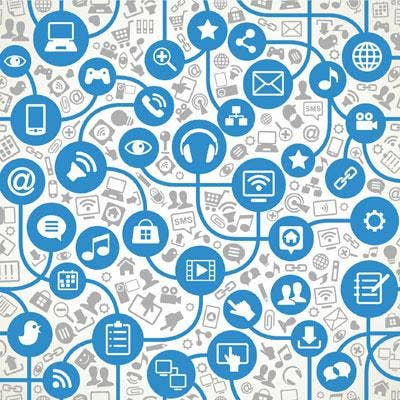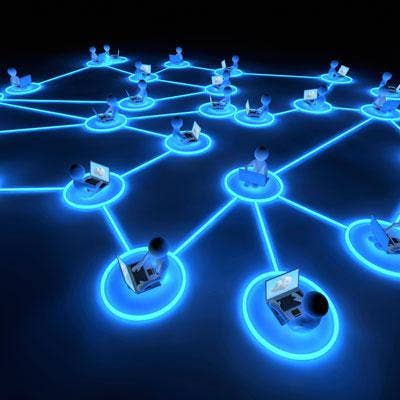Cisco Executive Maciej Kranz On The Best Practices -- And Biggest Mistakes -- Companies Make In IoT

The Best -- And Worst -- Of IoT
How can partners tap into the IoT opportunity? What are the best practices to build out -- and the worst habits to avoid -- when thinking up IoT solutions? Maciej Kranz, vice president and general manager of Cisco's Corporate Strategic Innovation Group, has been studying the Internet of Things market for years, and thinks he has an idea.
Kranz, who authored "Building The Internet of Things," said that IoT is at a tipping point and is gaining traction across various industries -- including manufacturing, transportation and retail. And Cisco partners play an important part in that increasing adoption. Here's what Kranz had to say about the IoT market.

What are some benefits of IoT you are seeing across various industries?
When I talk to customers across industries, whether it is manufacturing or transportation or smart cities, I noticed there were four sets of use cases for customers that have been implementing IoT today: They are connected operations, remote operation, predictive analytics and preventive maintenance.

Can you give some examples of IoT deployments where companies are seeing these benefits?
Harley Davidson is one example -- thanks to IoT, they have reduced the time it takes from ordering the parts to delivering from 18 months to two weeks. There's examples of mining companies like BHP -- they implemented preventive maintenance functions. Usually mines are in the middle of nowhere, so if a truck breaks down, it takes them days or weeks to diagnose the problem and fix it, but using preventive maintenance they can identify these problems several months in advance and save a lot of operational charges.

Are you seeing companies get more involved in IoT? How can companies get started?
What I've seen people do is go to conferences like IoT Evolution Expo -- they will talk to their peers, and look at the gap between where their peers are and where they are in terms of uptime capabilities. This will allow them to build a business case.
There is a difference which gets into the channel conversation between large companies and small to medium companies. Large companies would usually get a C-Suite sponsor because they are starting on a road of transforming the company, as IoT is the foundation for for digital transformation. And then they will start building a coalition including the partner ecosystem. While the smaller companies, which I've seen increasingly get more involved now, their main decision is who is the main integration partner I would pick.

What are some mistakes you are seeing that companies make with IoT deployments?
There are also lots of mistakes [in IoT implementations] -- in this industry, the companies are so conservative in sharing successes, but are even less willing to share their failures.
The most common problems are companies developing IoT solutions in isolation from the business process. For example, one city implemented a manhole automated system, but they forgot there is the sweeping process in the city, so sweepers were sweeping leaves into the manholes and clogging them. It’s a trivial example, but it exemplifies how we need to think about not just solving the business problem, but also the business processes that will be affected to make the solution work.

How do you think IoT will drive industry transformation for both partners and customers?
One of the big changes here, which I think from the partnership perspective is important, is if you think about the traditional technology industry, we used a model working as an ecosystem of partnerships developing horizontal technologies that are based on open systems and standards. Cisco and many other companies built a successful business based on this openness. More traditional industries like manufacturing or logistics, they used to have a different model, where if you wanted to build a train station there was vertical integration where one vendor will build it all -- using often proprietary systems and technologies.
So IoT, with its focus on open systems and cost structures and rapid innovation cycles, is driving the industry transformation from these closed systems to open systems more like we know in the traditional technology world. It's an interesting consequence for us because it prompts us to develop vertical partnerships with Rockwell Automation, as well as horizontal partnerships and channel partnerships.

What are some best practices partners can adopt around IoT?
For most of the partners, I'd say adopting the strategy of focusing on developing vertical solutions based on horizontal capabilities is the right strategy. You have to have vertical expertise, but you also have to have a repeatable model.
Other best practices I've seen -- one is around workforce. What I've seen is that successful companies that implement IoT change their focus on the workforce more internally by investing more internally and then focusing more on developing a culture of continual learning. We take for granted that people will come in and expect they'll be doing the same job for 20 years, and the job will change very little -- now we're moving to this model where you have to re-invent yourself and continue to broaden your skills.

Talk about the role of services in IoT, especially for partners.
There's a move from the product to services revenue model -- which I think has big implications on our partners. We're seeing a big migration here, which requires new skills from the channel perspective.
From my perspective what I've seen is flexibility from the partner perspective to operate in the service model -- not the traditional "I'm going to sell you a service," but most likely operating that service.

What are some big opportunity areas in IoT that partners can make money on?
Security and analytics are the two main areas which are opportunities for partners. Security because it's a big concern, even recently with the IoT DDoS attacks, the big focus for every customer, and on the vendor side, we're building capabilities in this space, but it's an opportunity for partners to develop those capabilities. Especially because, again, the traditional industries of manufacturing, transportation and others, have been coming from many years behind where we have been in the technology world.

What are some other trends in IoT you're seeing today?
Around standards, if you think about our traditional channel approach in IT or consumer, there are a handful of standard bodies that we traditionally work with like IEEE to develop horizontal standards. As we discussed earlier, IoT is a collection of markets, with this concept of semi-standard or proprietary standards, the business structure has been focused around a handful of companies getting together and developing their own version of the standards.